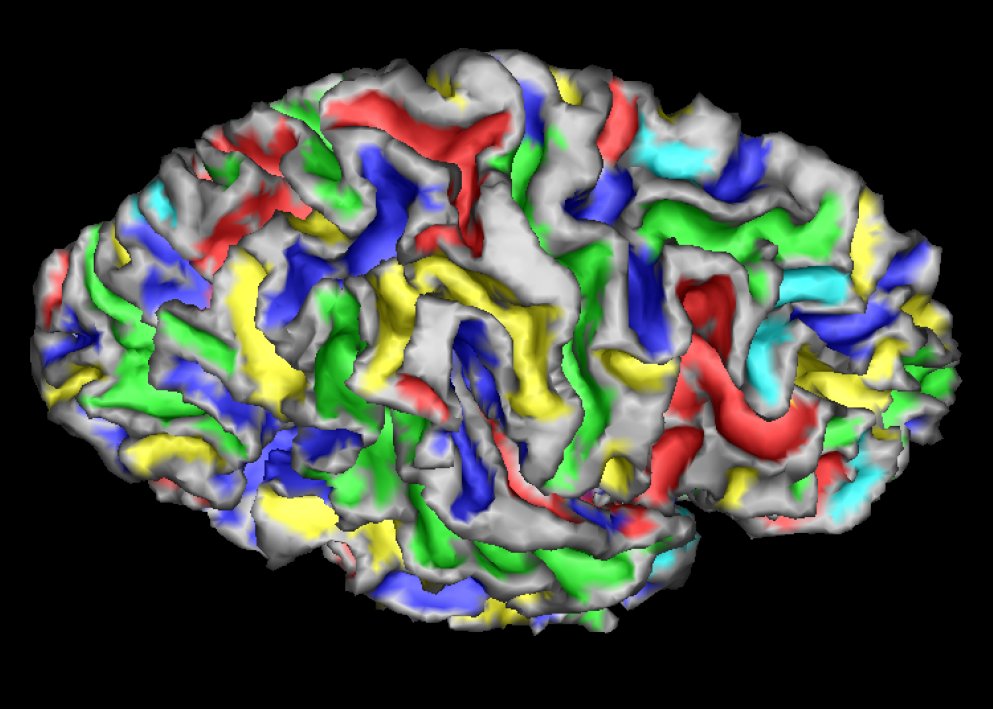Parcellation of the Neocortical Surface
Yang F., Kruggel F.
University of California, IrvineThe human brain cortex is a highly convoluted sheet of gray matter comprised of folds (gyri) and fissures (sulci). Sulci serve as important macroscopic landmarks to distinguish different functional areas of the brain. A precise segmentation and labeling of sulci is helpful in brain mapping studies that relate brain structure and function. Due to their structural complexity and inter-subject variability, segmenting sulci is considered as a non-trivial task. An automatic algorithm was developed to accurately segment neocortical sulci: Vertices of a white/grey matter interface mesh are classified under a Bayesian framework as belonging to gyral and sulcal compartments using information about their geodesic depth and local curvature. Then, vertices are collected into sulcal regions by a watershed-like growing method. An example segmentation of sulci on the convexity of the left hemisphere is shown below.
 |
Next, a sulcus identification algorithm was introduced using shape, orientation, location, and neighborhood information. Experimental results demonstrate that the method is efficient and accurate.
Read more...
Yang F., Kruggel F. (2007) Optimization Algorithms for Labeling Brain Sulci Based on Graph Matching. 11th International Conference on Computer Vision, pp. 1-7. IEEE Computer Society Press, Los Alamitos.
Yang F., Kruggel F. (2008) Automatic Segmentation of Human Brain Sulci. Medical Image Analysis 12, 442-451.
Yang F., Kruggel F. (2009) A Graph Matching Approach for Labeling Brain Sulci Using Location, Orientation, and Shape. Neurocomputing, in print.
